Introduction
In the pantheon of materials science, few discoveries have captured the imagination of researchers and the public alike as much as superconductors. These extraordinary materials promise to revolutionize everything from energy transmission to quantum computing, offering the tantalizing possibility of a world where electrical resistance is eliminated and magnetic levitation becomes commonplace. Yet despite over a century of research since their discovery, superconductors remain one of the most challenging and enigmatic frontiers in modern physics.
1. What Are Superconductors?

Superconductors are materials that exhibit two fundamental and remarkable properties when cooled below a critical temperature (Tc): zero electrical resistance and the complete expulsion of magnetic fields, known as the Meissner effect. This phenomenon, first discovered by Dutch physicist Heike Kamerlingh Onnes in 1911 when he observed that mercury’s electrical resistance dropped to zero at 4.2 Kelvin (-269°C), defied conventional understanding of materials science.
Sunnytech Solar Magnetic Levitation Model Levitating Mendocino Motor Educational Model ST41
If you want to see magnetic levitation in action, this beautiful desktop model demonstrates the basic principles of levitation and rotational motion using magnetic fields and solar power. A perfect educational tool and conversation starter for science enthusiasts.
The scientific definition of superconductivity encompasses three critical characteristics:
Zero Electrical Resistance: Unlike conventional conductors such as copper or silver, which always exhibit some resistance to electrical current, superconductors allow electrical current to flow without any energy loss. This means that once a current is established in a superconducting loop, it can theoretically persist indefinitely without any external power source.
The Meissner Effect: Discovered by Walther Meissner and Robert Ochsenfeld in 1933, this phenomenon describes how superconductors actively expel magnetic fields from their interior. This is not merely a consequence of zero resistance but represents a fundamental thermodynamic property that distinguishes superconductors from perfect conductors.
Critical Parameters: Every superconductor has three critical parameters that define its operational limits: critical temperature (Tc), critical magnetic field (Hc), and critical current density (Jc). Exceeding any of these parameters destroys the superconducting state.
The theoretical understanding of superconductivity was revolutionized by the BCS theory, developed by John Bardeen, Leon Cooper, and Robert Schrieffer in 1957, which earned them the Nobel Prize in Physics in 1972. The BCS theory explains superconductivity through the formation of Cooper pairs—electrons that overcome their natural repulsion and form bound pairs through interactions with the crystal lattice.
2. Types of Superconductors
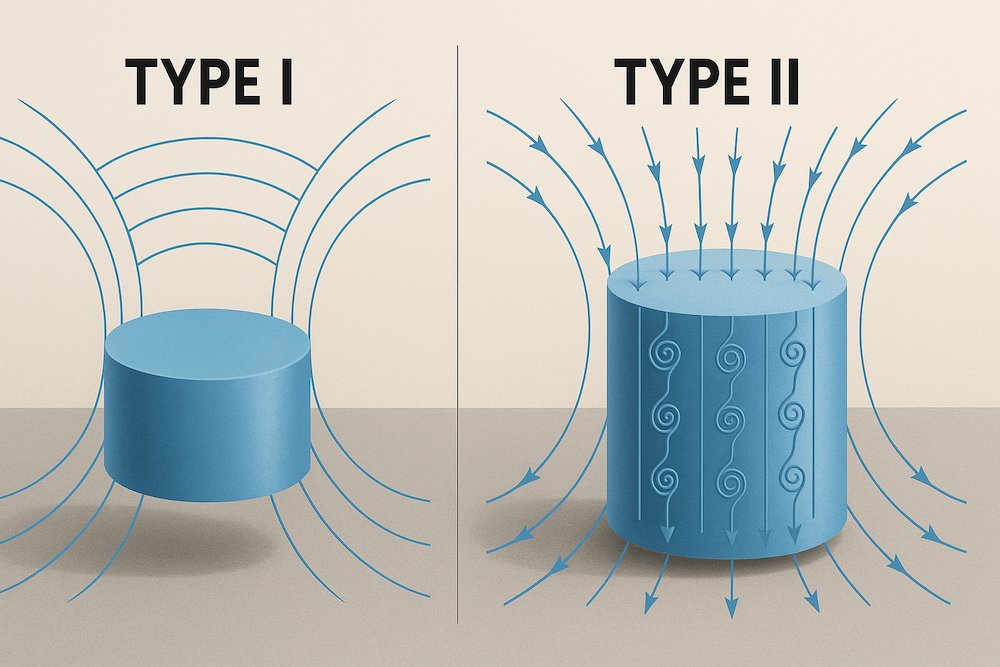
The superconductor family is broadly categorized into two main types, each with distinct properties and applications:
Type I Superconductors (Low-Temperature Superconductors)
Type I superconductors, also known as conventional or low-temperature superconductors (LTS), include elemental superconductors such as mercury, lead, tin, and aluminum. These materials typically have critical temperatures below 30 K (-243°C) and are characterized by:
- Complete magnetic field expulsion up to a critical field strength
- Abrupt transition from superconducting to normal state
- Well-understood BCS mechanism of electron pairing
- Practical applications in specialized fields requiring extremely low temperatures
The most widely used Type I superconductor is niobium (Nb), with a critical temperature of 9.2 K, which forms the basis for superconducting radio frequency (SRF) cavities used in particle accelerators like those at CERN and Fermilab.
Type II Superconductors (High-Temperature Superconductors)
Type II superconductors, discovered much later, exhibit more complex behavior and generally higher critical temperatures. This category includes:
Cuprate Superconductors: The breakthrough came in 1986 when Georg Bednorz and Karl Müller at IBM’s Zürich Research Laboratory discovered superconductivity in lanthanum barium copper oxide (La-Ba-Cu-O) at 35 K. This discovery, which earned them the Nobel Prize in Physics in 1987, launched the era of high-temperature superconductivity (HTS).
The most significant cuprate superconductors include:
- YBCO (YBa₂Cu₃O₇): Discovered by Paul Chu’s team at the University of Houston in 1987, with Tc = 93 K, this was the first superconductor to operate above liquid nitrogen temperature (77 K), making it economically viable for many applications.
- BSCCO (Bismuth Strontium Calcium Copper Oxide): A family of superconductors with the highest member (Bi₂Sr₂Ca₂Cu₃O₁₀) having Tc = 110 K, extensively used in superconducting tapes and cables.
- Mercury-based cuprates: The current record holder for highest critical temperature at ambient pressure is HgBa₂Ca₂Cu₃O₈, with Tc = 134 K, discovered in 1993.
Iron-based Superconductors: Discovered in 2008 by Hideo Hosono’s group at Tokyo Institute of Technology, these materials represent the second major family of high-temperature superconductors. The iron-based superconductors, despite containing magnetic iron, exhibit superconductivity with critical temperatures up to 55 K in ambient pressure.
Unconventional Superconductors: This category includes materials that don’t fit the conventional BCS model, such as heavy fermion superconductors, organic superconductors, and the recently discovered nickelate superconductors.
3. Materials and Compositions
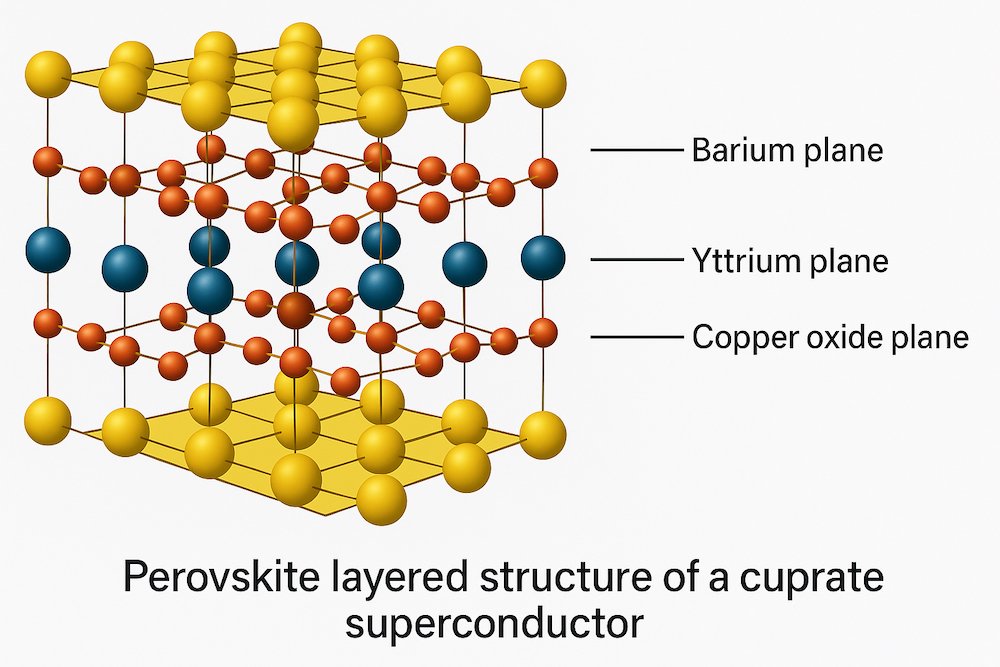
The diversity of superconducting materials reflects the complex physics underlying the phenomenon. Each material class offers unique advantages and challenges:
Cuprate Superconductors
YBCO (YBa₂Cu₃O₇): This compound features a layered perovskite structure with CuO₂ planes that are believed to be the primary locus of superconductivity. The material’s properties are highly anisotropic, with superconductivity occurring primarily in the copper-oxygen planes. Industrial production of YBCO involves complex processes including sol-gel synthesis, solid-state reaction, and thin-film deposition techniques such as pulsed laser deposition (PLD) and metal-organic chemical vapor deposition (MOCVD).
BSCCO: The bismuth-based superconductors are particularly important for wire and tape applications due to their favorable mechanical properties. The Bi-2223 phase (Bi₂Sr₂Ca₂Cu₃O₁₀) is manufactured commercially by companies like American Superconductor Corporation (AMSC) and Sumitomo Electric Industries using powder-in-tube (PIT) technology.
High Precision Lab Scale (5000g x 0.01g)
For accurate mass measurements in material synthesis and laboratory research, this precision lab scale delivers reliable results down to 0.01g.
Hydride Superconductors
The discovery of superconductivity in hydrogen-rich compounds under extreme pressure has opened an entirely new frontier. In 2015, researchers at the Max Planck Institute for Chemistry achieved superconductivity in hydrogen sulfide (H₃S) at 203 K under 155 GPa pressure. This breakthrough was followed by the discovery of superconductivity in lanthanum hydride (LaH₁₀) at 250 K under 170 GPa pressure in 2018.
Recent work has focused on ternary hydrides, with claims of near-room-temperature superconductivity in carbon-sulfur-hydrogen systems, though these results remain controversial and require extreme pressures exceeding 267 GPa.
Emerging Materials
Graphene and Carbon-based Systems: Research into graphene superconductivity has revealed fascinating physics, including unconventional superconductivity in twisted bilayer graphene at specific “magic angles.” MIT researchers led by Pablo Jarillo-Herrero demonstrated superconductivity in twisted bilayer graphene in 2018, opening new avenues for understanding unconventional superconductivity.
Nickelate Superconductors: In 2019, researchers at Stanford University discovered superconductivity in nickelate compounds (Nd₀.₈Sr₀.₂NiO₂), providing a new platform for studying high-temperature superconductivity beyond cuprates.
EMF & Electromagnetic Field Radiation Detector 4-in-1
This compact EMF detector can help identify electromagnetic interference, crucial in sensitive superconductivity experiments where external fields may affect measurements.
4. Current State of Research
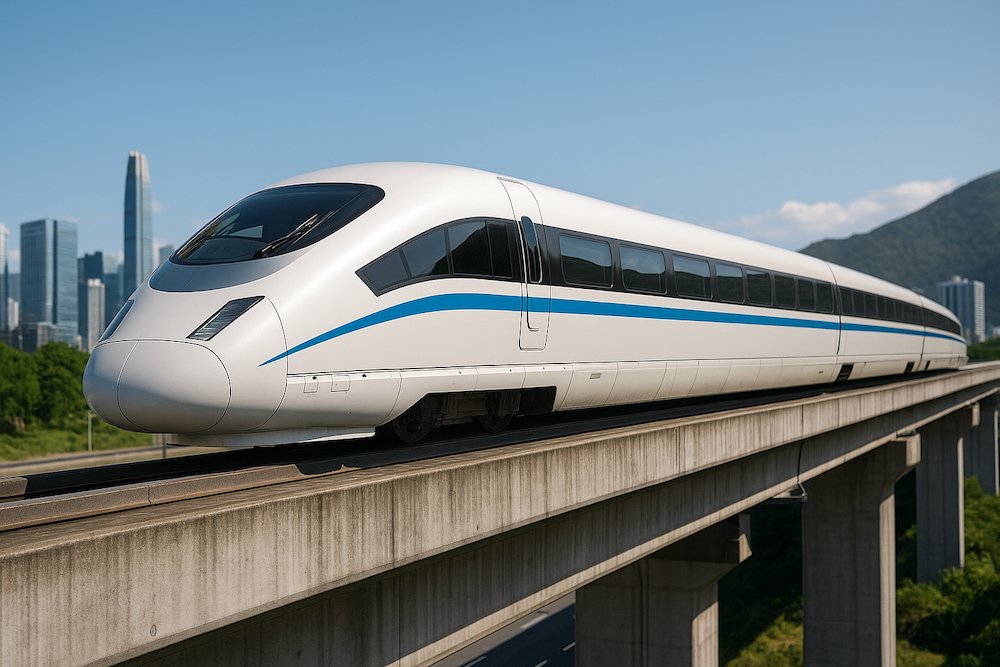
The field of superconductor research is experiencing unprecedented activity, driven by both fundamental scientific curiosity and the promise of transformative applications.
Recent Breakthroughs
Researchers have made a significant step in the study of a new class of high-temperature superconductors: creating superconductors that work at room pressure, according to recent work from SLAC National Accelerator Laboratory. This advancement represents a crucial step toward practical applications, as it eliminates the need for extreme pressure conditions that have limited the utility of many promising superconducting materials.
In August 2024, researchers from SLAC National Accelerator Laboratory, Stanford University, and other institutions observed that electron pairing, required for achieving superconductivity, can occur at much higher temperatures in n-type superconductors than previously thought. This discovery challenges conventional understanding and opens new pathways for developing higher-temperature superconductors.
An absence of the normal cores in novel kind of vortices in type III superconductors open an opportunity to move without energy dissipation, representing a breakthrough in understanding vortex dynamics in superconductors. This research, published in October 2024, suggests the possibility of a new type of superconductor with enhanced properties.
Pressure-Driven Superconductivity
This experiment revealed a novel approach to discovering new states of matter that do not exist at ambient pressure originally or even under high-pressure conditions, according to researchers at the University of Houston who are developing new techniques for creating and studying superconducting materials under extreme conditions.
The quest for ambient-pressure, room-temperature superconductors continues to drive innovation in materials science. New materials designed by a University of Illinois Chicago graduate student may help scientists meet one of today’s biggest challenges: building superconductors that operate at normal temperatures and pressures, demonstrating the crucial role of young researchers in pushing the boundaries of the field.
International Research Efforts
Major research institutions worldwide are contributing to superconductor research:
MIT (Massachusetts Institute of Technology): Leading research in unconventional superconductors, particularly twisted bilayer graphene systems and theoretical understanding of pairing mechanisms.
CERN (European Organization for Nuclear Research): Developing advanced superconducting magnets for particle accelerators, including the High-Luminosity Large Hadron Collider upgrade.
RIKEN (Japan): Pioneering work on iron-based superconductors and quantum materials research.
Chinese Academy of Sciences: Extensive research programs covering both fundamental physics and practical applications, with significant investments in superconducting power applications.
Oak Ridge National Laboratory: Leading research in neutron scattering studies of superconducting materials and advanced manufacturing techniques.
5. Current Applications
Despite the challenges in achieving room-temperature superconductivity, existing superconductors have found numerous practical applications that demonstrate their transformative potential.
Medical Applications
Magnetic Resonance Imaging (MRI): Superconducting magnets, mainly used in scientific research & technology development and medical applications, dominate the market for Superconductors worldwide, accounting for a share of 81% of the total market in 2024. MRI machines rely on superconducting electromagnets to generate the strong, stable magnetic fields necessary for high-resolution imaging. These systems typically use niobium-titanium (NbTi) superconductors cooled with liquid helium to 4.2 K.
Superconducting Quantum Interference Devices (SQUIDs): These extremely sensitive magnetometers can detect magnetic fields as small as 5×10⁻¹⁸ Tesla, making them invaluable for medical diagnostics, including magnetoencephalography (MEG) and magnetocardiography (MCG).
Energy Applications
Maglev Transportation: Superconducting magnetic levitation trains, such as Japan’s SCMaglev and Germany’s Transrapid, use powerful superconducting magnets to achieve frictionless levitation and propulsion. The Japanese SCMaglev has achieved speeds of 603 km/h in testing, with commercial service planned for the Tokyo-Nagoya route.
4M Kidzlabs Anti Gravity Magnetic Levitation Science Kit – Maglev Physics STEM Toys
This hands-on science kit allows kids and adults alike to explore the principles behind maglev technology with simple, fun experiments. An excellent gift for anyone curious about the future of transportation and superconducting magnets.
Power Transmission: Superconducting cables can carry 3-5 times more current than conventional copper cables of the same size while eliminating resistive losses. Projects like the AmpaCity project in Essen, Germany, and the Tres Amigas SuperStation in New Mexico demonstrate the viability of superconducting power transmission.
Energy Storage: Superconducting Magnetic Energy Storage (SMES) systems can store and release large amounts of energy almost instantaneously, making them ideal for grid stabilization and power quality applications.
Scientific and Research Applications
Particle Accelerators: The Large Hadron Collider at CERN uses over 1,600 superconducting dipole magnets made from niobium-titanium to guide particle beams around the 27-kilometer circumference. These magnets operate at 1.9 K and generate magnetic fields of 8.3 Tesla.
Nuclear Magnetic Resonance (NMR) Spectroscopy: High-field NMR spectrometers using superconducting magnets are essential tools in chemistry, biochemistry, and materials science research.
Fusion Energy Research: Projects like ITER and private fusion companies rely extensively on superconducting magnets to confine the plasma at temperatures exceeding 100 million degrees Celsius.
Computing and Electronics
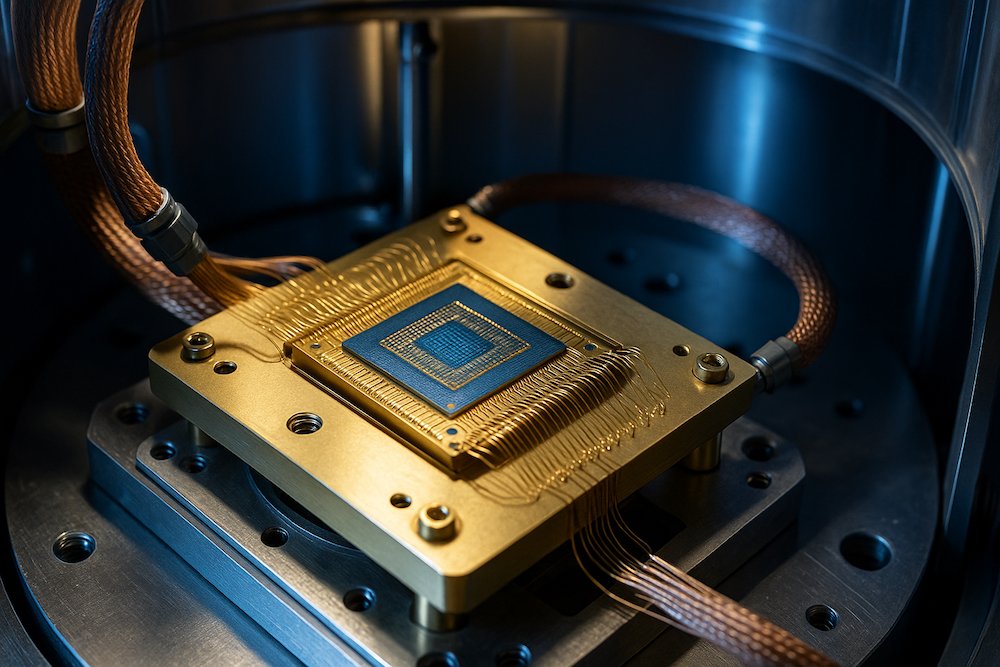
Quantum Computing: Superconducting qubits, based on Josephson junctions, are among the leading platforms for quantum computing. Companies like IBM, Google, and Rigetti Computing use superconducting circuits for their quantum processors.
Digital Electronics: Superconducting digital circuits offer the promise of ultra-low power, high-speed computing, though they remain primarily in research phases.
6. Current Limitations and Technological Challenges
Despite their revolutionary potential, superconductors face significant challenges that limit their widespread adoption:
Temperature Requirements
The need for cryogenic cooling remains the primary obstacle for most superconductor applications. Even “high-temperature” superconductors require cooling with liquid nitrogen (77 K) or specialized cryocoolers, adding complexity and cost to systems.
Cooling Infrastructure: Maintaining cryogenic temperatures requires sophisticated refrigeration systems. For example, a typical MRI machine consumes 1-2 kW of electrical power just for cooling, representing a significant operational cost.
Cryogenic Gloves for Liquid Nitrogen Safety (LN2)
For anyone handling liquid nitrogen or extremely low-temperature experiments, these cryogenic gloves offer reliable protection against frostbite and extreme cold exposure.
Thermal Cycling: Repeated heating and cooling cycles can cause mechanical stress and degradation in superconducting materials, particularly in practical applications where power interruptions are common.
MESTEK Infrared Laser Thermometer Gun (-50~800°C)
Precise non-contact infrared thermometer, perfect for laboratory measurements in cryogenic experiments or high-temperature materials research.
Manufacturing Challenges
Material Purity: Superconducting properties are extremely sensitive to impurities and defects. Manufacturing high-quality superconducting materials requires precise control of composition and processing conditions.
Scalability: Many advanced superconductors can only be produced in small quantities using laboratory-scale techniques. Scaling up production while maintaining quality remains a significant challenge.
Cost: The complex manufacturing processes and specialized materials required for superconductors result in high costs. For example, superconducting wire can cost 10-100 times more than conventional copper wire.
Mechanical Properties
Brittleness: Many ceramic superconductors, particularly cuprates, are mechanically brittle and difficult to form into practical shapes like wires and cables.
Strain Sensitivity: The superconducting properties of many materials are degraded by mechanical strain, limiting their use in applications involving vibration or thermal expansion.
Current Density Limitations
Grain Boundaries: In polycrystalline superconductors, grain boundaries act as weak links that limit the overall current-carrying capacity of the material.
Flux Pinning: In Type II superconductors, magnetic flux can penetrate the material in the form of vortices. Controlling the motion of these vortices is crucial for maintaining high current densities.
7. The International Race for Practical Superconductors
The quest for practical, room-temperature superconductors has become a global scientific and technological race with significant geopolitical implications.
Major Research Centers and Programs
United States: The Department of Energy supports extensive superconductor research through national laboratories including Argonne, Brookhaven, and Oak Ridge. The NSF funds university research programs, while DARPA supports defense-related applications.
China: Massive investments in superconductor research and applications, including the world’s first commercial superconducting power transmission line and extensive research into iron-based superconductors.
Japan: Long-standing leadership in superconductor applications, particularly in maglev transportation and power systems. The Japanese government has committed significant resources to the SCMaglev project.
European Union: Coordinated research efforts through programs like Horizon Europe, with emphasis on both fundamental research and practical applications.
South Korea: Significant investments in superconductor research, though recent controversies have highlighted the challenges in this field.
Corporate Players
General Electric: Developing superconducting wind turbine generators and power grid applications.
Siemens: Working on superconducting motors for industrial applications and power transmission systems.
American Superconductor Corporation (AMSC): Specializing in high-temperature superconductor wire and power systems.
SuperPower Inc.: Manufacturing second-generation HTS wire for power applications.
Sumitomo Electric Industries: Leading producer of superconducting cables and systems.
DC Power Supply Variable 0-30V 0-10A Bench Power Supply
High-precision bench power supply, ideal for controlled experiments, material testing, and laboratory setups requiring stable voltage and current.
8. Recent Controversies: The LK-99 Saga
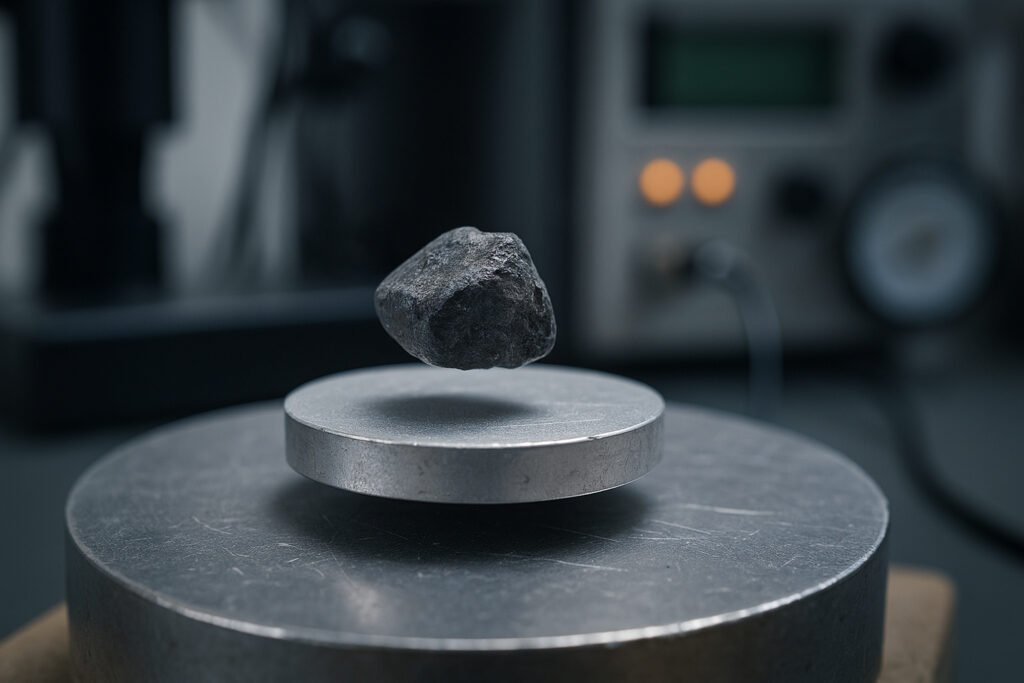
The field of superconductor research was dramatically shaken in 2023 by claims surrounding a material called LK-99, which highlighted both the excitement and the pitfalls associated with breakthrough claims in this field.
The Initial Claims
In July 2023, a team of South Korean researchers led by Lee Sukbae and Kim Ji-Hoon published papers claiming to have discovered the first room-temperature, ambient-pressure superconductor. The superconductivity of LK-99 originates from minute structural distortion by a slight volume shrinkage (0.48 %), not by external factors such as temperature and pressure, according to their original paper.
The claimed material, a modified lead-apatite with copper substitution (Pb₁₀₋ₓCuₓ(PO₄)₆O), was said to exhibit superconductivity at temperatures up to 127°C (400 K) under normal atmospheric pressure. If true, this would have represented the most significant breakthrough in materials science in decades.
The Scientific Response
Materials scientists and superconductor researchers responded with skepticism, given the extraordinary nature of the claims and the lack of comprehensive characterization data. The initial papers lacked many of the standard measurements expected for superconductor verification, including detailed resistivity measurements, specific heat data, and comprehensive magnetic characterization.
South Korean stocks linked to superconductors plunged Tuesday after a US-based research center rebutted claims of a sensational breakthrough in the technology, demonstrating the immediate economic impact of these scientific claims.
Replication Efforts and Debunking
Shortly after news of LK-99 reached the mainstream media, researchers from laboratories in multiple countries reported that they could not replicate results showing that LK-99 behaved as a superconductor, and a consensus quickly developed that the Korean team’s results were in error.
Research groups worldwide attempted to synthesize and test LK-99, including teams at:
- University of Maryland: One of the first to report negative results
- Max Planck Institute: Detailed analysis showing no superconductivity
- Chinese Academy of Sciences: Multiple groups reporting synthesis attempts
- MIT: Theoretical analysis questioning the proposed mechanism
Official Verdict
On December 13, 2023, the Korean Society of Superconductivity and Cryogenics Verification Committee announced that no evidence supported the claim that LK-99 is a room-temperature, ambient-pressure superconductor. LK-99, an alleged room-temperature superconductor created by a South Korean research team, has not shown any key features of superconductivity, according to the official Korean review committee.
Efforts to replicate the material have pieced together the puzzle of why it displayed superconducting-like behaviours, with researchers determining that the observed magnetic levitation was likely due to ferromagnetism rather than the Meissner effect.
Ongoing Developments
Despite the debunking of the original LK-99 claims, a team of Chinese scientists, from respected institutions, have reported success with replicating some aspects of the LK-99 experiment, though these results remain controversial and have not been independently verified.
Lessons Learned
The LK-99 controversy highlighted several important aspects of modern scientific research:
- The role of social media in rapidly spreading scientific claims before peer review
- The importance of comprehensive characterization in materials science
- The economic sensitivity of markets to breakthrough scientific claims
- The need for careful replication before accepting extraordinary claims
9. Future Prospects and Implications
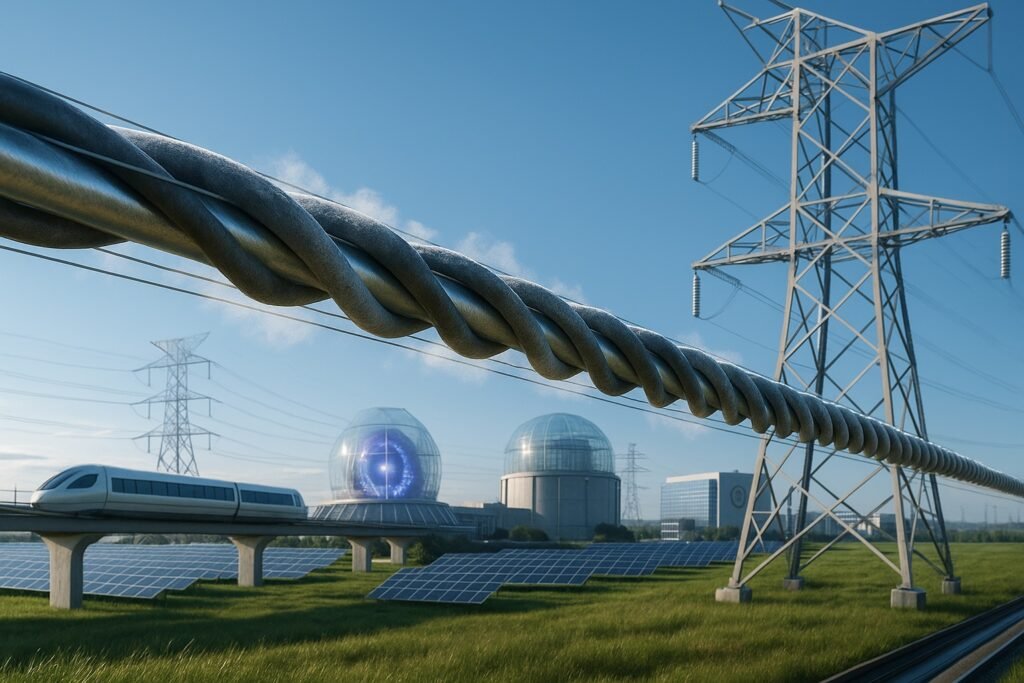
The future of superconductor technology holds immense promise, with potential applications that could fundamentally transform human civilization.
Technological Roadmap
Near-term (2025-2030): Continued improvements in high-temperature superconductors, expanded use in power grids, transportation, and medical applications. Forecast to be US$8.5 billion in 2024, the global superconductors market size is projected to reach above US$16 billion by 2030, growing at a CAGR of 11.2% between 2024 and 2030, indicating robust growth in practical applications.
Medium-term (2030-2040): Potential breakthrough in higher-temperature superconductors, widespread adoption of superconducting power transmission, commercial fusion energy systems.
Long-term (2040-2050): Possible achievement of practical room-temperature superconductors, revolutionary changes in transportation, energy storage, and computing technologies.
Economic and Geopolitical Implications
Energy Revolution: Room-temperature superconductors could eliminate transmission losses in electrical grids, potentially saving trillions of dollars in energy costs globally. They could enable more efficient renewable energy systems and revolutionary energy storage solutions.
Transportation Transformation: Superconducting maglev systems could provide ultra-high-speed, energy-efficient transportation, while superconducting motors could revolutionize electric vehicles and aircraft.
Computing Paradigm Shift: Superconducting electronics could enable quantum computers with thousands of qubits, potentially solving complex problems in cryptography, drug discovery, and artificial intelligence.
Geopolitical Competition: Nations leading in superconductor technology could gain significant strategic advantages in energy, transportation, and defense applications.
Scientific Frontiers
Theoretical Understanding: Despite decades of research, the mechanism of high-temperature superconductivity remains incompletely understood. Future breakthroughs may come from advances in theoretical physics, particularly in understanding electron correlations and unconventional pairing mechanisms.
Materials Discovery: Machine learning and artificial intelligence are increasingly being used to predict and design new superconducting materials. High-throughput computational screening may accelerate the discovery of new superconductors.
Extreme Conditions: Research into superconductivity under extreme conditions, including high pressure, strong magnetic fields, and exotic environments, continues to reveal new physics and potential applications.
Environmental Impact
Superconductors could play a crucial role in addressing climate change by:
- Reducing energy waste through lossless power transmission
- Enabling more efficient renewable energy systems
- Improving energy storage capabilities
- Reducing the carbon footprint of transportation systems
10. Visual Data and Comparative Analysis
Market Growth and Applications
The superconductor market demonstrates robust growth across multiple sectors:
Medical Applications: Dominating with 81% market share in 2024, primarily driven by MRI systems and advanced medical imaging technologies.
Power and Energy: Growing rapidly with applications in smart grids, energy storage, and renewable energy integration.
Transportation: Emerging sector with significant potential, particularly in maglev trains and electric propulsion systems.
Research and Development: Continued investment in particle accelerators, fusion energy research, and quantum computing applications.
Temperature Progression
The historical progression of superconductor critical temperatures shows the dramatic impact of high-temperature superconductor discovery:
- 1911: Mercury at 4.2 K
- 1986: La-Ba-Cu-O at 35 K (Nobel Prize 1987)
- 1987: YBCO at 93 K (Above liquid nitrogen temperature)
- 1988: Tl-Ba-Ca-Cu-O at 125 K
- 1993: HgBa₂Ca₂Cu₃O₈ at 134 K (Current ambient pressure record)
- 2015: H₃S at 203 K (Under 155 GPa pressure)
- 2018: LaH₁₀ at 250 K (Under 170 GPa pressure)
Global Research Investment
Research funding in superconductor technology shows significant international commitment:
- United States: ~$200 million annually through DOE and NSF programs
- China: Estimated >$300 million annually across various programs
- Japan: ~$150 million annually, particularly in transportation applications
- European Union: ~$100 million annually through coordinated programs
- South Korea: ~$50 million annually in materials research
Conclusion
Superconductors represent one of the most promising yet challenging frontiers in modern materials science. From their discovery over a century ago to today’s cutting-edge research into room-temperature superconductivity, these materials continue to captivate scientists and engineers with their potential to revolutionize technology.
The recent advances in understanding superconducting mechanisms, the development of new materials under extreme conditions, and the growing market for superconductor applications all point to an exciting future. However, the LK-99 controversy serves as a reminder of the importance of rigorous scientific verification and the challenges inherent in this complex field.
As we stand on the brink of potential breakthroughs in room-temperature superconductivity, the international research community continues to push the boundaries of what’s possible. The eventual achievement of practical, room-temperature superconductors would not merely represent a scientific triumph but could usher in a new technological age, transforming how we generate, transmit, and use energy, while opening unprecedented possibilities in transportation, computing, and beyond.
The race for superconductor supremacy continues, driven by the profound implications these materials hold for the future of human civilization. Whether the breakthrough comes from a major research institution, a innovative startup, or an unexpected source, the impact will be felt across every sector of society, making superconductors one of the most important technological frontiers of the 21st century.
The journey toward practical superconductors may be long and fraught with challenges, but the potential rewards—clean energy, revolutionary transportation, quantum computing, and technologies we can barely imagine—make it one of the most important scientific endeavors of our time. As research continues to accelerate and our understanding deepens, we edge closer to unlocking the full potential of these remarkable materials that could reshape our world.
If you enjoy groundbreaking science like superconductors, don’t miss our deep-dive into another incredible medical innovation: The Pacemaker That Disappears After It Saves You. Discover how fully dissolvable implants could transform cardiac care forever.
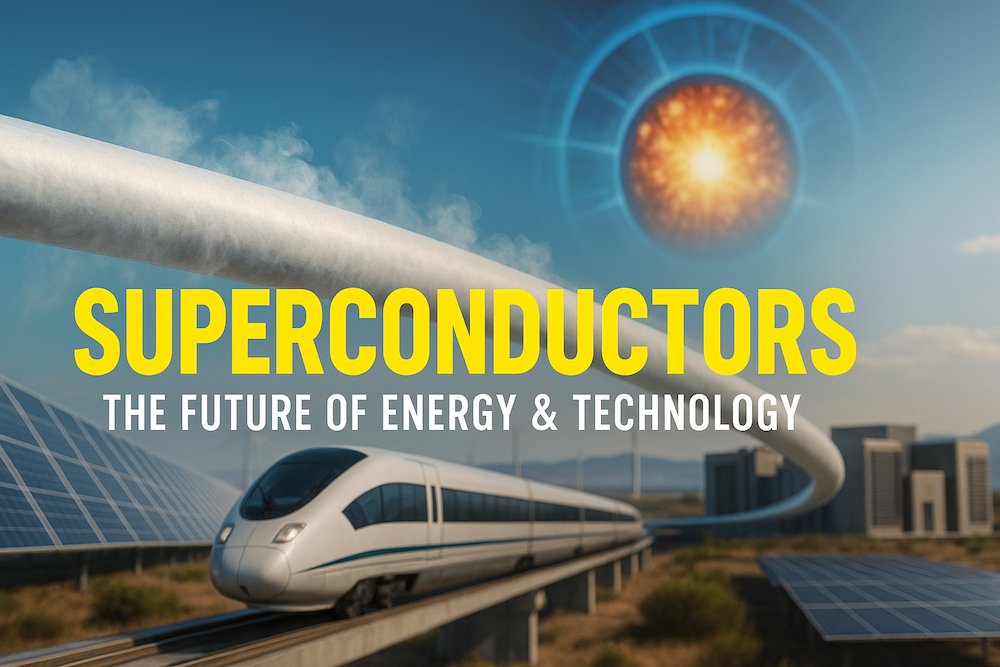
Pingback: Quantum Computing Breakthrough 2025: 99% Less Energy
Pingback: AI Drug Discovery 2025: How AI Discovers New Drugs in Days